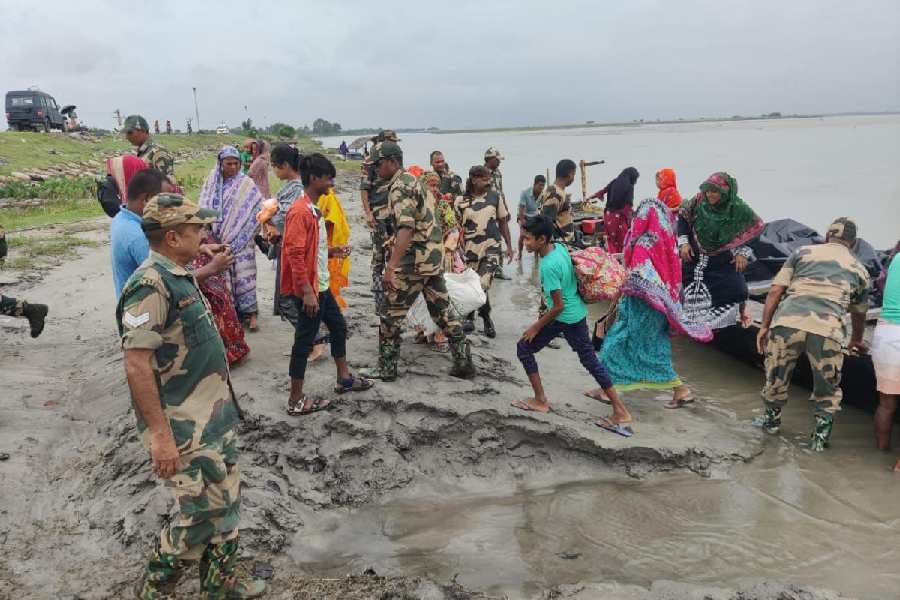Exactly 55 years later, the Darjeeling-Sikkim region saw a rerun of a calamity that devastated the fragile area once again.
The region received four days of continuous rainfall between October 2 and 5 back in 1968, which triggered hundreds of landslides, swept houses and bridges and killed around 1,000 people.
“The weather cycle coincides almost to the day in 2023 with the events of 1968,” recalled Jeta Sankrityayan, former head of the department of economics at North Bengal University, on Wednesday.
A student of Mount Hermon School in Darjeeling, Jeta had gone to Kalimpong along with his sister to celebrate Dashain (Durga Puja) at his grandmother’s place in October 1968.
“The skies were clear and we were to return to school. We used to stay opposite the Darjeeling taxi syndicate. When we went to book a ticket, the syndicate people told us that the roads were breached,” he said.
The famous Anderson Bridge at the Teesta Bazar had completely washed off on October 4, 1968, he said. Fifty-five years later, on Wednesday, the Teesta overflowed at the very spot where Anderson Bridge once stood.
“We walked up to a place near St Augustine’s School from where we could see that the bridge had been washed away while the one at Melli had been partially damaged,” said Jeta.
The 1968 incident is considered one of the biggest calamities the region.
Leszek Starkel, a professor of Polish Academy of Sciences who has been studying landslides in this part of the country for the past 40 years, provided an overview of the downpour this region received.
“I had first come to Darjeeling to study the evolution of mountains in 1968. I was amazed by the destruction. The region had received 1,000mm of rainfall in 52 hours, equivalent to two years of rainfall in Poland,” Starkel had earlier told this newspaper.
The Teesta river was gurgling noisily on Wednesday morning like it used to in the earlier days.
Wing Commander (retd) Praful Rao heard the river roar from atop a Kalimpong hill.
“From Tirpai (in Kalimpong town), I heard the Teesta gurgle like it used to when I was young. Of late, the Teesta had gone silent (as it has been tamed by numerous dams),” said Rao on Wednesday.
The sound and the news of the devastation that had started to trickle since Tuesday night brought back horrific memories of 1968 for many old-timers.

BSF personnel reach Singhpara, an islet in the Teesta, at Mekhliganj of Cooch Behar near the India-Bangladesh border, for rescue operations
“Tirpai (which is part of Kalimpong town) was cut off from the main town. There were no food supplies. Army helicopters would bring food supplies, sometimes airdrop them and other essentials at Durpin helipad (in Kalimpong),” said Rao.
A week after the destruction in 1968, Rao went to the Teesta Bazar, some 16km downhill from Kalimpong and took photographs of the remains of the Anderson Bridge.
Jeta said he was stranded in Kalimpong for three weeks before he trekked back through the alternative Lava-Gorubathan route.
“I and some family members started at 5am, walked till Lava, hopped into army trucks till Gorubathan, took another vehicle to Siliguri and stayed the night back there,” recalled Jeta. “I was 13 years old then.”
The next day, Jeta and his nephew took the Pankhabari route for the first time in his life, only to find the road blocked beyond Kurseong. “We then walked back to Darjeeling through the Old Military Road,” Jeta said.
“It was an adventure I never forgot.”











